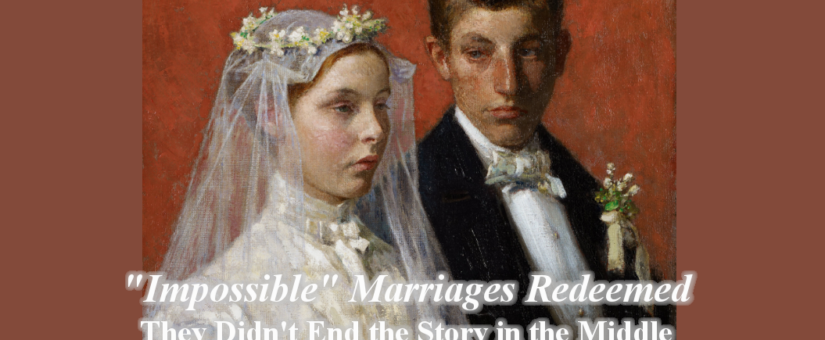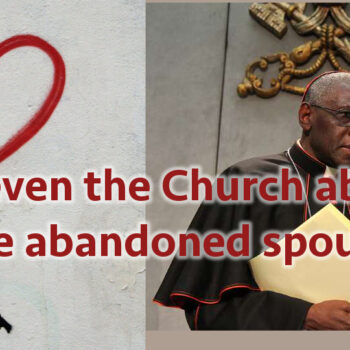
Book Review – “Impossible” Marriages Redeemed
- Posted by Mary's Advocates
- On August 20, 2020
- 0 Comments
They Didn’t End the Story in the Middle
edited by Leila Miller
Book Review originally published in Latin Mass Magazine Summer 2020
republished with permission
reviewed by Sheryl Temaat
In his Foreword, Philip Lawler says that the people who contributed their stories to Leila’s book have sacrificed their comfort and their pride to save their marriages for the sake of their spouses and their children. That is what people used to do. I know that some of my aunts and uncles did that.
The first part of Leila’s book contains fifty stories of troubled marriages that overcame the temptation to divorce and move on. What is a troubled marriage? Virtually every marriage at some time or all the time. But these people knew that they made vows that they needed to keep for their eternal salvation. That is what many of them say like the writer of Story #26: “Everyone surrounding me told me to burn his things in the yard, run away, and move on. But one person, a priest, challenged me to honor my vows.”
Many priests in these stories gave the opposite advice: divorce, petition for nullity, and you can many again in the Church. I was glad to read in the book that there are priests who do not give this awful advice. The last thing that children need are strange men dating Mom, and Dad acting goofy over new women. Children need Mom and Dad together as they vowed until death parts them. In Story #23, the wife of Tom had married him outside the Church even though she was a baptized Catholic. The marriage was invalid for lack of form, but she writes: “Just because a marriage can be declared null does not mean it should or must be, or that it will make life better. There is a more excellent and better way… There is no need to break the family.”
It is shocking how many stories include infidelity. But the spouses overcame even that violation of marriage vows. The woman who wrote Story #5 says that after six years of marriage in the 1970s, her husband left her for another woman. At the age of 24 with two children, she went to a priest to see about an annulment. He told her that she had no grounds because on the day of her wedding they had freely chosen marriage; they intended to be faithful, to marry for life and to have children.
After more separations and a divorce, she and her husband reconciled because, as she writes: “the goal of marriage is the salvation of each other’s soul.”
There is one story after another as inspiring as the three I have briefly noted. This is a really happy, encouraging book.
But what about those marriages that have not reconciled? Section Two of the book contains fourteen stories of Standers that are also inspiring. Abandoned spouses tell their stories of being faithful to their vows even when the other spouse is not. Theresa writes in Story #53 that three different priests advised her to seek nullity after her husband divorced her because she deserved to be happy.
But she knew that God hates divorce and she had two choices: remain single or reconcile. Her husband married civilly but ended up divorced again (as 70% of second marriages do), and now they get together with their children and grandchildren for holidays. She prays for his return to the Church and to their marriage.
The Church has needed a book like this for six decades since no-fault divorce and the flood of marriages being declared null for lack of due discretion and psychological incapacities, which everyone with a functioning brain knows that all marriages do qualify for.
✠
“Impossible” Marriages Redeemed: They Didn’t End the Story in the Middle was edited by Leila Miler with a foreword by Philip F. Lawler
✠
Mrs. Sheryl Temaat, BA English, University of Colorado, Colorado Springs, CO; M.Ed., Regis University, Denver; CO. She is a contributor to Homiletic and Pastoral Review and New Oxford Review




0 Comments